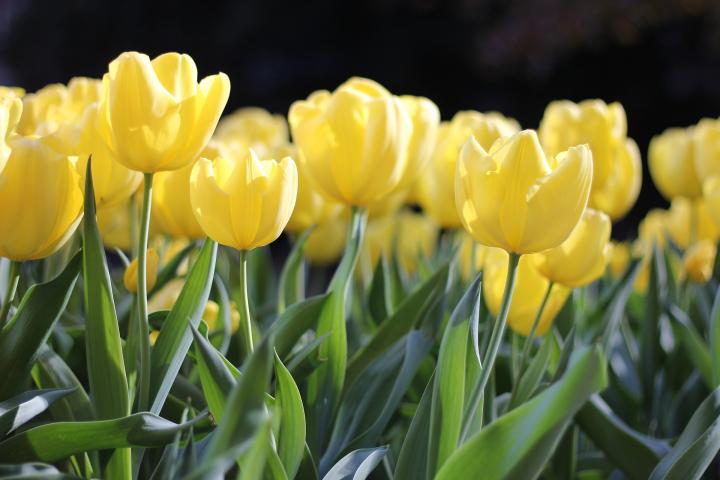
It's Not Too Late to Plant Tulips!
The Almanac Garden Planner - Use It Free for 7 Days!
Plan your 2025 garden with our award-winning Garden Planner.
ADVERTISEMENT
After reading through this article, I sorted through bulbs that hadn’t been planted in fall. My grandsons and I salvaged bulbs that had started a stem. That was 3 weeks ago. Today (3/21), we counted 89 bulbs that have popped through the ground! The weather has been great, warm and wet, so we’re excited to see what makes it to a late bloom. Thanks for the info!
I am in Zone 9 and have some tulip bulbs that have already bloomed.
Should i plant them in pots or put them in the refrigerator for next spring?
Thanks for the tip. Exactly what I wanted to hear. Also putting chicken wire on top is a good idea from another poster.
After planting them in pots(February). Once they begin growth can you plant them in the ground.
If you have tulips growing in a container, do not dig out the bulbs.You can plant the entire pot in the ground. And once the foliage dies back, you can transplant the bulbs into your garden. They may bloom the following year; keep in mind that a lot of hybrid tulips don’t come back a second year and are treated as annuals.
Thank you, Robin Sweeney, for the great informative article on Clivias. It’s the most complete growing article I’ve seen thus far. Like others, I jumped in purse first, and bought a yellow flowering Clivia from White Flower Farm a few years ago. What I haven’t done, was move it into a cool dry space to encourage it to bloom, and so my blooms, as amazing as they’ve been, have shown up in June and July. I’m about to March that gorgeous greenery out to the garage for a long rest.
I’m curious about where one can find the variations you mention. I finally got a long awaited greenhouse built and look forward to Scratching a few specialty plants off my long list list.
Thank for all you do, and Happy New Year! You’re the Best!
Tulips are surprisingly hardy. We've had warm spells in January and February when the plants start peeking up from the ground. But then we get hard, freezing weather and I often wonder if the tulips and daffodils will survive. Yes, they do!! My only difficulty is keeping the squirrels and mice from eating the bulbs. Have had to plant them in "bulb saucers" and/or line the planting areas with gravel to keep the critters out!!
I read another article that informed to lay wide-wired fencing, almost like chicken fencing, across the top of the tulip bulbs to help prevent squirrels from stealing the bulbs. Hope this is helpful.
I always have some bulbs that I plant in the winter. Sometimes I get too tired of digging and planting in the fall, because I've been busy all summer and am busy canning, drying, and freezing in the fall. We usually have a week of warmer weather in January, even though I'm in northern Nevada where it snows etc. Anyway, I plant the ones I've had in the garage. They come up on time in the spring. One thing I always use with my bulbs is Epsom salts. I put a tablespoon or so in each hole and put the bulb in and cover with dirt. Then I sprinkle some on the top of the soil, so it'll fertilize extra when it snows or rains. The bulbs love the magnesium and the squirrels and other rodents don't eat my bulbs. If you can remember where your bulbs are year to year, you can sprinkle some Epsom salts on anytime in the fall or winter. I have so many, and such a large yard that I forget where some are. Always a great surprise when they come up.
At first I loved this idea, but if you have squirrels in your yard be advised that they LOVE tulip bulbs and planting them above the ground where they are scrounging for food in winter turns your bulbs into a welcomed winter banquet. Even planting at the appropriate depth in fall (late fall for me) does not completely prevent the squirrels from finding them. Layering with Daffodils (squirrels do not like them) helps create a barrier to the tulip bulbs in my garden but that would not be possible using the method described in this article.











